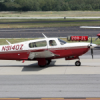-
Posts
375 -
Joined
-
Last visited
-
Days Won
1
Skywarrior last won the day on August 10 2013
Skywarrior had the most liked content!
The recent visitors block is disabled and is not being shown to other users.

Skywarrior replied to FlyWalt's topic in Modern Mooney Discussion

Skywarrior replied to DXB's topic in Vintage Mooneys (pre-J models)

Skywarrior replied to Kevin's topic in Vintage Mooneys (pre-J models)

Skywarrior replied to rockydoc's topic in Avionics/Panel Discussion

Skywarrior replied to N9405V's topic in General Mooney Talk

Skywarrior replied to scoobysmak's topic in General Mooney Talk

Skywarrior replied to rubixcube2k3's topic in General Mooney Talk
We have placed cookies on your device to help make this website better. You can adjust your cookie settings, otherwise we'll assume you're okay to continue.